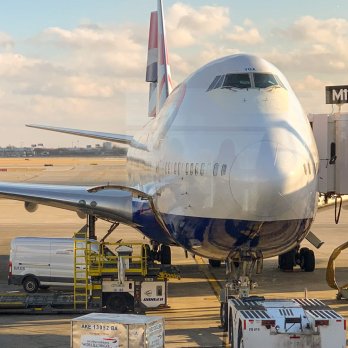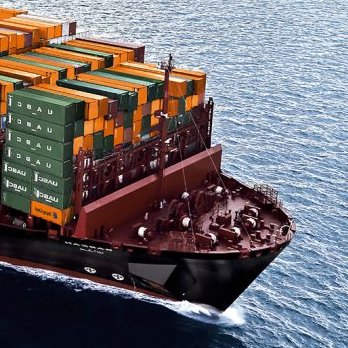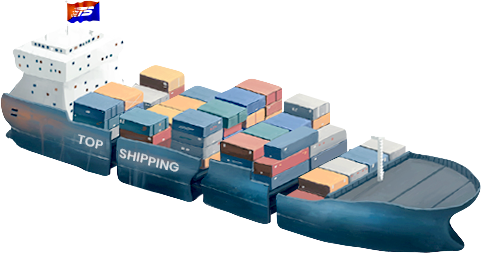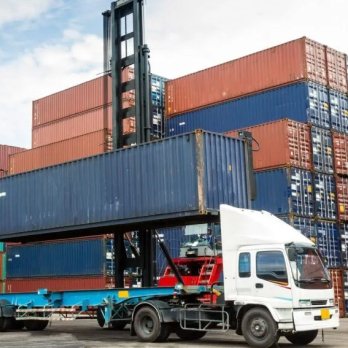Transportation Stages
The process of transportation of goods from Shanghai to Los Angeles involves successive stages of selection of a mode of transportation, planning of logistics, and finally arriving at a destination

 Air Freight
Air Freight

 Rail Freight
Rail Freight

 Sea Freight
Sea Freight

 Truck transportation
Truck transportation
Click this link All Services to explore all of our offerings!
Table of Contents
International transport, especially cargo shipment from China to the United States, forms one of those fundamental features that hold together international trade. Among such closely traveled and important routes of transport is the shipment route from Shanghai to Los Angeles.
This route is made possible by airplanes and cargo ships, which in essence connect two of the world’s most important commercial centers. Shanghai itself enjoys a geographically important position as one of the largest ports in the world and acts as a major source in transporting goods to the western shores in the United States, like in Los Angeles.
On the other hand, Los Angeles is among the busiest harbors in the world and the economic center of the United States; thus, it is the final destination for international shipments that take their roots in Shanghai. In this paper, we try to look closer at the process of transport from Shanghai to Los Angeles: transportation route, schedule, and influential factors that potentially could affect the goods being shipped.
The routes from Shanghai to Los Angeles are many, with the most used being sea transportation. Sea Transport: Sea cargo transportation will be the main source of transportation between these two cities because of the efficiency and cost effectiveness that it presents to the transportation of goods from Shanghai to Los Angeles. It usually begins with the container vessels that depart from Shanghai ports, such as the Port of Shanghai or Yangshan Deepwater Port, to the ports of Los Angeles, primarily the Port of Los Angeles. This route crosses the Pacific Ocean and is extremely long-it takes two to four weeks, depending on the weather conditions, vessel speed, and port congestion.
The cargo options available in maritime shipping include containers, general cargo, bulk cargo, and oversized cargo. Shipping by containers is considered a standard option for ocean cargo transportation since the movement of standardized container units is easy and can be transferred from one mode of transport to another with much ease. Besides, in maritime shipping, there are flexible options regarding scheduling since there are regular sailings between Shanghai and Los Angeles that make it feasible for businesses and traders in transporting goods.
All in all, the sea freight acts as a backbone of transport between Shanghai and Los Angeles since sea transport serves as a link for goods flow and sustains international relations between China and the United States.

The process of transportation of goods from Shanghai to Los Angeles involves successive stages of selection of a mode of transportation, planning of logistics, and finally arriving at a destination
To begin with, it is necessary to point out the most favorable means of transportation that will be implemented in shipping commodities from Shanghai to Los Angeles. In this regard, it has been emphasized that maritime shipping is usually utilized because it is relatively cheap and effective in transporting over the Pacific Ocean. Nonetheless, other options like air freight or a combination of different modes of transportation, that is, multimodal transport may be implemented based on various variables such as urgency, type of cargo as well as budgetary limits.
Once the mode of transportation has been decided, that is where the logistics planning comes in: organizing the shipment, providing for the pickup of goods from the origin location in Shanghai, and coordinating the logistics network for the whole journey. Logistics planners chart the optimal routing, including distance, times of transit, and available infrastructure of transport with any probable disruptions along the way. They also handle customs clearance procedures, documentation, and compliance with international shipping regulations.
When the logistics plan is already set, goods are prepared to be forwarded. In the case of sea freight shipment, loading of cargo into containers takes place at the originating port. In this case, Shanghai is the port of origin. Then the container is moved to the appointed vessel for shipment to Los Angeles. The forwarder tracks cargo during all phases of transit for its safe and timely arrival. This depends on the shipping line and the service selected, as some ships could have intermediate stops at other ports en route to Los Angeles.

Are you looking to ship cargo containers from China to Argentina? Our full ocean transportation service centers on all major Chinese ports, including Shanghai, Shenzhen, Ningbo, Qingdao, Guangzhou, Tianjin, Dalian, Xiamen, Hong Kong, and Macao. We are in a position to provide you with flexible shipping options according to your best choice: door-to-door, door-to-port, or port-to-port shipment from China to Argentina.
Thanks to our door-to-door service, cargo could be delivered to Córdoba, Mendoza, Santa Fe, Salta, San Miguel de Tucumán, San Juan, among others. According to the destination city, we use the most convenient ports in Argentina: Buenos Aires, Rosario, or Puerto Madryn among others depending on which one could offer the best logistics.
The container transit from China to Argentina takes about 25-50 days and largely depends on the service route and the sailing schedule. We seek to offer you a shipment solution that is in time and reliable, to assist you in realizing your logistics needs by way of ensuring that your cargo reaches its destination in safety and timely.
Ocean freight from Shanghai to Los Angeles acts as a critical part in international trade, moving merchandising across two very dynamic economic centers. The route is among the busiest, with many shipping lines operating between the Port of Shanghai and the Port of Los Angeles.
It is considered a voyage across the Pacific Ocean and takes about 6,000 nautical miles. Container vessels laden with containers depart from the various terminals of the Port of Shanghai, including Yangshan Deepwater Port, which is considered one of the largest container ports in the world. These then cross the Pacific, utilizing designated shipping lanes to the Port of Los Angeles, referred to as one of the busiest container ports in the United States.
Ocean freight from Shanghai to Los Angeles ensures that cargo is transported in a very reliable way and efficiently, at low cost, allowing large volumes. The containerized shipping used by most ocean freight provides for efficiency in loading, unloading, and transportation; thus, this mode allows many types of products to be transported this way.
Services offered by shipping lines on this route vary, so there can be a variety of transit times, different container types, and variations in the frequency of sailings. Thus, customers can have a range of choices concerning the different demands for speed, cost, and reliability.
While it has its advantages, ocean freight from Shanghai to Los Angeles might equally be affected by congestion in the ports, delays caused by bad weather conditions, and fuel price volatility. Good logistics planning, selection of responsible shipping partners, and technology for tracking and monitoring can help minimize these aspects so that goods can be smoothly transported across the Pacific Ocean.

Air freight transportation from Shanghai to Los Angeles is a vital mode of transport when there is urgency in delivery and when cargo goods are of high value. It connects two major economic hubs, and shipments will reach their destinations substantially faster compared to ocean freight. The following overview has been given about air freight transported from Shanghai to Los Angeles.
Major airports in Shanghai include Shanghai Pudong International Airport (PVG) and Shanghai Hongqiao International Airport (SHA); these two serve as popular air cargo departure points for a great deal of shipments. Equipped with state-of-the-art cargo facilities, they function as major centers of international air freight.
Flight time for air freight depends on such factors as airline routing, weather conditions, and aircraft type. Flight time estimates from Shanghai to Los Angeles are generally around 10-12 hours or so. Air freight thus assures much quicker transit times than ocean freight, which at the best of times takes at least a few weeks. This makes it fit for urgent shipments.
The proper handling of cargo and safety in air freight is designed in such a way that shipment is well taken care of in terms of safety and integrity. Each cargo is well-loaded and tightly fixed to the aircraft so it does not get damaged while in transit. On the other hand, air freight facilities use tight security screening processes, adhering to international aviation regulations that are pretty strict. In this respect, all cargo is transported with safety and speed, having full security measures maintained all through the way.
Customs clearance procedures are one of the major elements of air freight from Shanghai to Los Angeles. The shipments have to clear customs inspections and verification of documents relating to the regulations on import. Efficient customs clearance procedures help speed up the flow of goods down the supply chain, reducing delays to a minimum.
The cargo that lands at LAX is unpacked and then sent to a distribution center or individual warehouses. After which, goods are sorted out, and arrangements for their distribution to other destinations in Los Angeles or other parts of the United States are made accordingly.
On the other hand, air freight, though efficient and speedy, generally becomes more expensive than ocean freight. The urge of shipment, worth of cargo, and budget constraint are some major factors that shippers must consider when going through with air freight as an option.
On the whole, air freight from Shanghai to Los Angeles presents a dependable and time-saving method for shipping goods, especially for shipments that are highly sensitive and of high value. Through the use of air transport efficiency and collaboration with logistics partners, companies are guaranteed their merchandise will arrive on time at destinations within Los Angeles and beyond.
From | To | Destones | Time | FCL 20 foot | FCL 40 foot | FCL 40'HC foot | FCL 45'HC foot | LCL-1 CBM | LCL-5 CBM | LCL-10 CBM |
Shenzhen | Los Angeles | 6000.29 mi- 11112.54 km | 25 days | $3170-$4226 | $3455-$4610 | $3460-$4610 | $3733-$5000 | $777-$1030 | $1453-$1940 | $2200-$2930 |
From | To | Destones | Time | 100 kg | 300 kg | 500 kg |
Shenzhen | Los Angeles | 6282.26 mi 11634.74 km | 14 hours | $1437-$1900 | $3356-$4478 | $4639-$6180 |
From | To | Transit time | 10 kg | 100 kg |
Shenzhen | Los Angeles | 3-6 days | $290-$390 | $1050-$1400 |
The transit times from Shanghai to Los Angeles vary depending on the mode of transportation selected, whether it is by air or sea. These transit times are given below, in general, for each one of these modes of transportation.
By the general trend, air freight from Shanghai to Los Angeles covers comparatively short transit times, usually from 1 to 3 days. Air freight is the fastest mode of delivery and hence very feasible for shipments that are highly time-sensitive or of high value.
Ocean freight from Shanghai to Los Angeles is longer in transit, whereas air freight is less so, but it is highly cost-effective for big volumes of cargo. The average transit generally ranges from 15 to 25 days, depending on the shipping line, route taken, and congestion at the port.
The documents and permits that will be required for the proper implementation of the transportation stages from Shanghai to Los Angeles include customs documents and permits which are used to clear customs-related processes.
A packing list denotes the shipment of items in each cargo by detailing the item description, weight, dimensions, and quantity. It allows customs officials to double-check the correctness of a cargo declaration and means the proper way of handling goods as well as their identification during transport.
The Bill of Lading is a type of contract between the shipper and carrier, which may be described as an acknowledgment that the goods have been received and must be moved to their destination. It is also viewed as a title document, entitling the consignee to demand delivery of the goods against production of the document at the destination port.
It requires a customs declaration form, also known as a customs entry or import declaration, to declare the imported goods to customs at the port of destination. It contains all the details of the products imported, like value and origin, and the purpose for which they were imported, which helps in facilitating the custom clearance and assessment duties and taxes.
Import licenses or permits are part of the regulatory process for some commodities and in particular to some countries like the United States. These permits sanction the importation of certain kinds of goods and help ensure that health, safety, environmental, and trade regulations are complied with. Such permits must be obtained by importers prior to shipping the goods in their country to avoid delay or refusal of entry at customs.
The Certificate of Origin is a document which certifies the origin of the shipped goods. This might also be required for merchandise eligible for preferential tariff treatment under free trade agreements or for meeting import regulations requiring evidence of origin for specific products.
Other requirements include inspection certificates, permits for items which are restricted or controlled, as well as export licenses, depending on the nature and type of goods and requirements by customs authorities.
Documentation, therefore, plays an important role in ensuring it is accurate and complete to obtain permits necessary to facilitate easy customs clearance and compliance with import regulations transporting goods from Shanghai to Los Angeles.
Delays, fines, and even seizure of shipment by customs authorities can take place for failure to provide the requisite documentation or permit. Thus, it is very important that importers and exporters coordinate with their freight forwarders, customs brokers, and legal advisors to iron out issues in international trade and to comply with all regulatory requirements.

Shipping from Shanghai to Los Angeles involves the very important aspects of international trade. These two cities are strategic and major economic centers that connect the whole movement of goods and people between China and the United States. The shipment by air or ocean involves immense planning of the delivery, effective management of logistics, and adherence to various international regulations.
Air freight confers speed and efficiency suitable for shipments that need to be delivered on time, but ocean freight is more economical in large volumes of cargo over a long distance. Each transportation method has its pros and considerations according to the required delivery time, cost, and type of shipment.
Whatever means of shipment is selected, the key words on how cargo is handled, documents are prepared, and customs are cleared would be a sure determinant for delivery to be timely and smooth from Shanghai to Los Angeles. This cooperation involves seeking help from experienced shipping partners and using technology to make tracking and monitoring easier; thus, allowing every business to optimize its shipping processes and stay on top of the global market.
In all, freight shipment from Shanghai to Los Angeles provides the required support and enables trade and commerce to take place between China and the United States with more vigor and enthusiasm for economic growth and cooperation on international levels.
Discover why we’re the TopShipping company with our specialized Shipping From China to US solutions. Navigate to our services to ensure seamless delivery and unparalleled reliability.

With years of experience in logistics and freight forwarding, the author is passionate about making shipping smoother and more efficient.
As a leader at TopShipping, they’ve developed a deep understanding of supply chain management, international shipping rules, and creative logistics solutions. They’re driven by a desire to help businesses succeed by delivering reliable, customer-focused services.
Over the years, they’ve also shared their expertise by writing for various industry publications, offering practical tips and insights on the latest trends in logistics. Thanks to their leadership, TopShipping has become a trusted name for companies looking for hassle-free global freight solutions.

